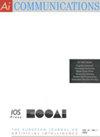利用外部资源检测社交媒体中的攻击性内容
IF 1.4
4区 计算机科学
Q4 COMPUTER SCIENCE, ARTIFICIAL INTELLIGENCE
引用次数: 2
摘要
仇恨言论是当今社会的一个紧迫问题,涉及许多战略领域,包括人权保护、难民保护以及反对种族主义和歧视。António联合国秘书长古特雷斯(Guterres)进一步证明了这一问题的严重性,他称这是“对民主价值观、社会稳定与和平的威胁”。仇恨言论传播的一个核心平台是互联网,尤其是社交媒体。因此,自动检测这些平台上的仇恨和攻击性内容是一项至关重要的挑战,一旦克服,将为平等和可持续的社会做出巨大贡献。应对这一挑战的一个重大困难是收集足够的标记数据。在我们的工作中,我们研究了如何利用各种资源来规避这一困难。我们使用不同的机器学习模型(包括最先进的变压器)进行广泛的实验,以利用各种数据源。我们发现,使用我们提出的方法,可以在Twitter上获得最先进的仇恨言论检测性能(优于HASOC 2019和HASOC 2020比赛的获胜者)。可以观察到,在一般情况下,添加更多的数据可以提高性能,或者不会降低性能。即使在使用良好的语言模型和知识转移机制时,使用来自一个或两个额外数据集的数据也可以获得最佳结果。本文章由计算机程序翻译,如有差异,请以英文原文为准。
Leveraging external resources for offensive content detection in social media
Hate speech is a burning issue of today’s society that cuts across numerous strategic areas, including human rights protection, refugee protection, and the fight against racism and discrimination. The gravity of the subject is further demonstrated by António Guterres, the United Nations Secretary-General, calling it “a menace to democratic values, social stability, and peace”. One central platform for the spread of hate speech is the Internet and social media in particular. Thus, automatic detection of hateful and offensive content on these platforms is a crucial challenge that would strongly contribute to an equal and sustainable society when overcome. One significant difficulty in meeting this challenge is collecting sufficient labeled data. In our work, we examine how various resources can be leveraged to circumvent this difficulty. We carry out extensive experiments to exploit various data sources using different machine learning models, including state-of-the-art transformers. We have found that using our proposed methods, one can attain state-of-the-art performance detecting hate speech on Twitter (outperforming the winner of both the HASOC 2019 and HASOC 2020 competitions). It is observed that in general, adding more data improves the performance or does not decrease it. Even when using good language models and knowledge transfer mechanisms, the best results were attained using data from one or two additional data sets.
求助全文
通过发布文献求助,成功后即可免费获取论文全文。
去求助
来源期刊

AI Communications
工程技术-计算机:人工智能
CiteScore
2.30
自引率
12.50%
发文量
34
审稿时长
4.5 months
期刊介绍:
AI Communications is a journal on artificial intelligence (AI) which has a close relationship to EurAI (European Association for Artificial Intelligence, formerly ECCAI). It covers the whole AI community: Scientific institutions as well as commercial and industrial companies.
AI Communications aims to enhance contacts and information exchange between AI researchers and developers, and to provide supranational information to those concerned with AI and advanced information processing. AI Communications publishes refereed articles concerning scientific and technical AI procedures, provided they are of sufficient interest to a large readership of both scientific and practical background. In addition it contains high-level background material, both at the technical level as well as the level of opinions, policies and news.
 求助内容:
求助内容: 应助结果提醒方式:
应助结果提醒方式:


